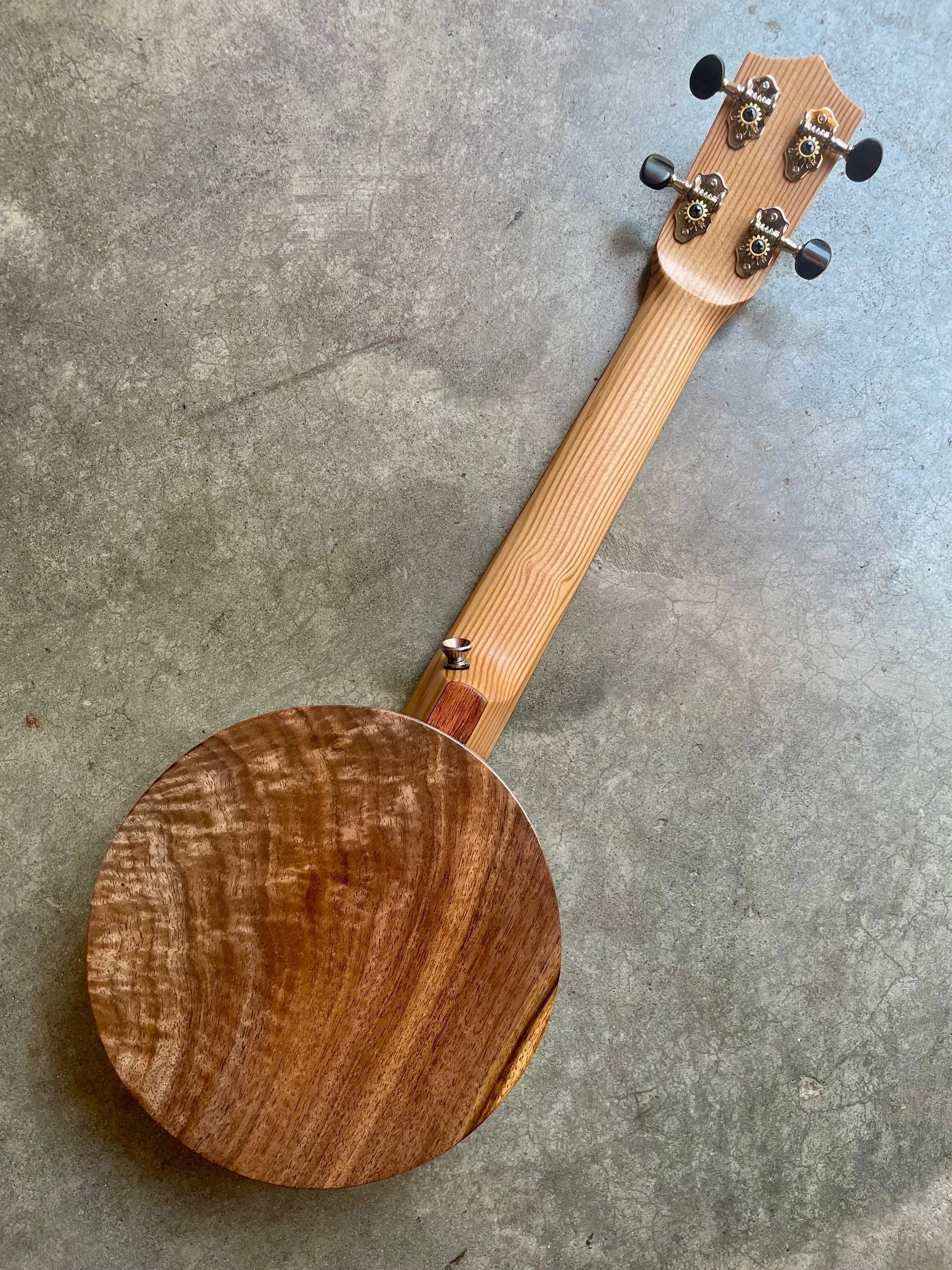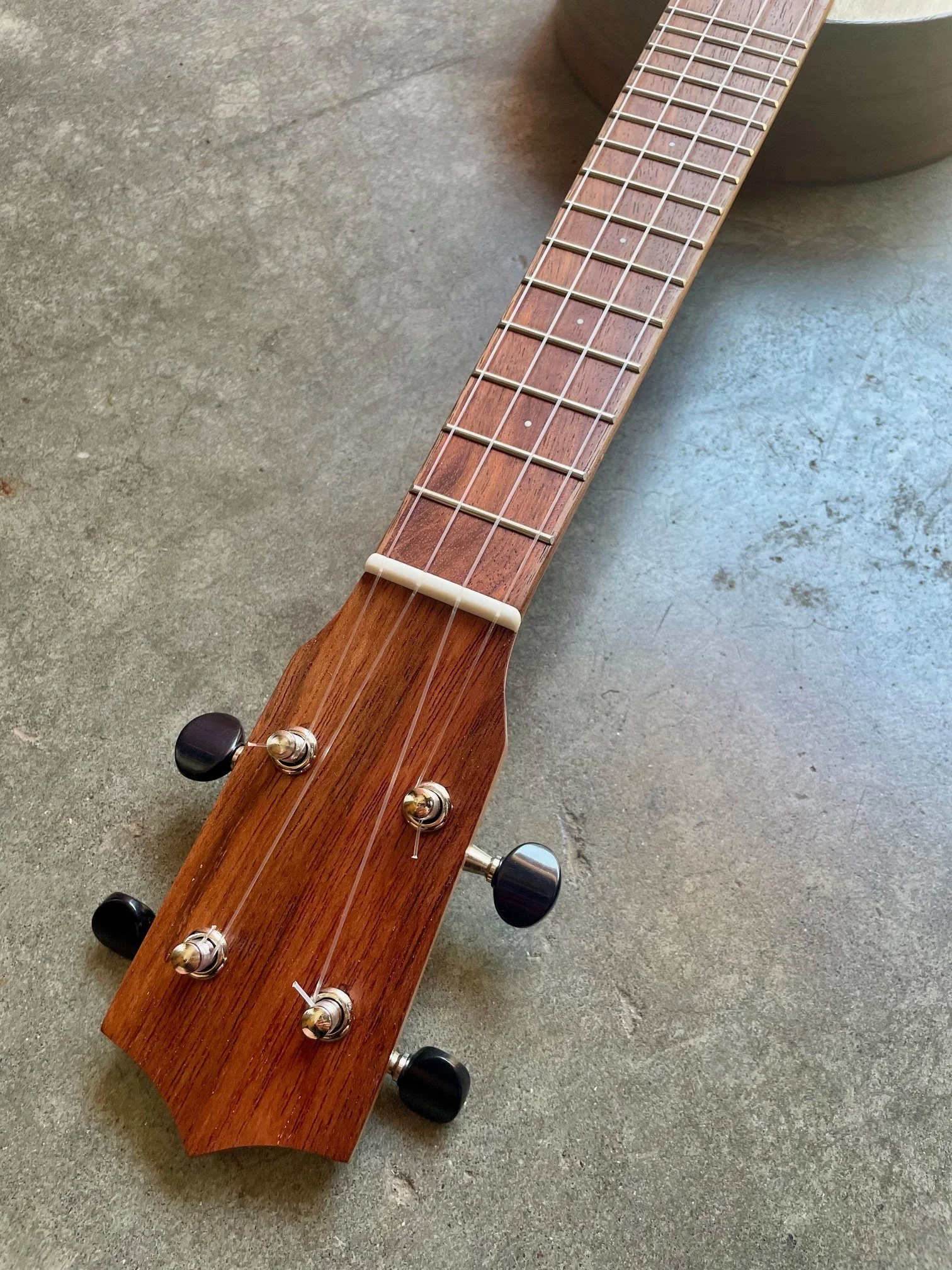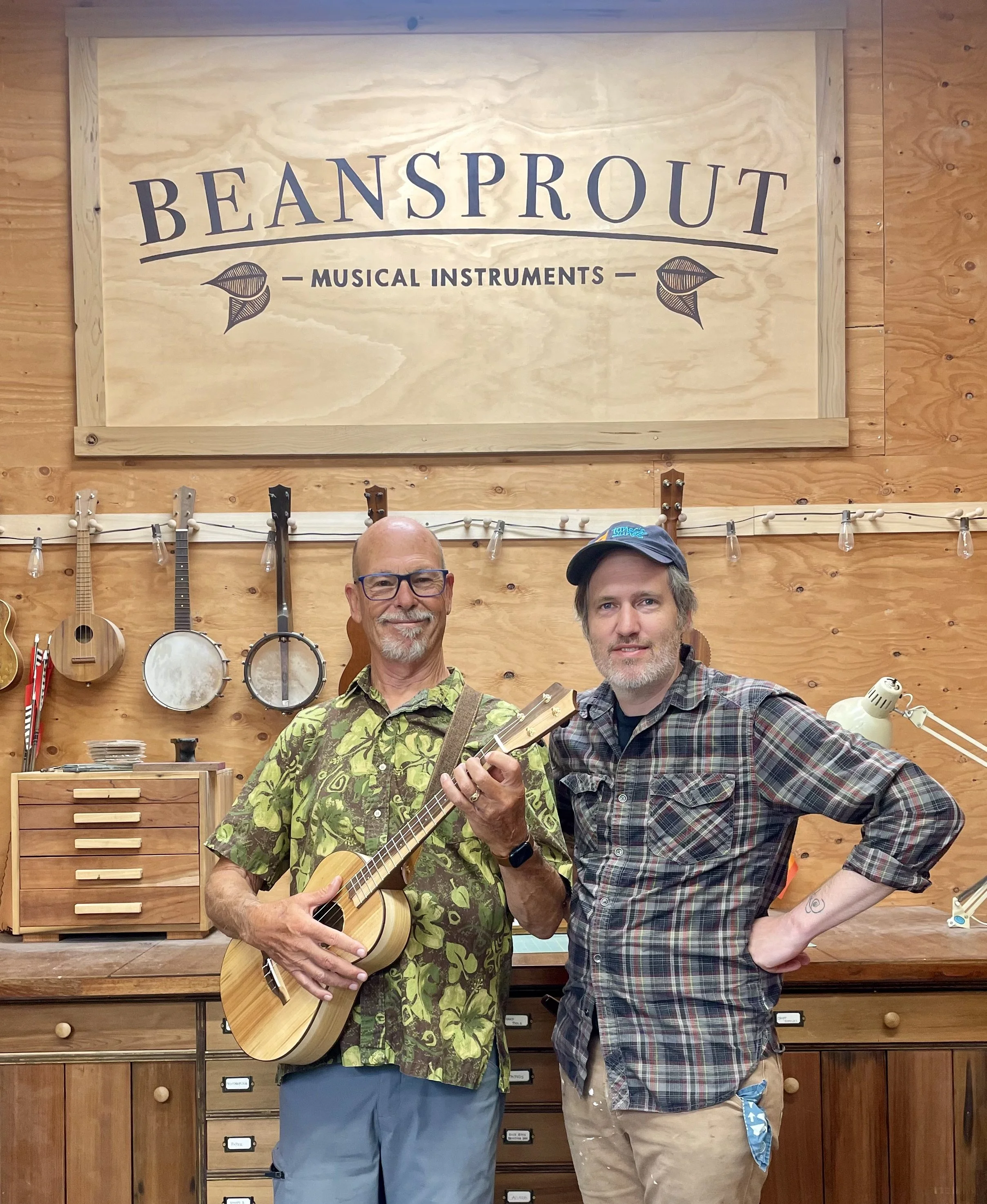Mango is a great medium density wood, suitable for top, back and sides. It has a similar tone to Koa or Mahogany, but with its own mellow sweetness. It is one of the few tropical woods I use, but only when I salvage it or get it from Hawaii. In the case, the customer (Perry Stauffer) gave me some mid century furniture that they didn’t want. I recognized it as Mango and we sliced it up for ukes! Salvaging wood like this has served me well in the past, but it really is a tremendous amount of labor. I am glad that it yielded some nice wood. Perry is one half of Starlight Ukes and as a duo with Dani Joy. We have known them for a long time and always valued their educational mindset and solid musicianship.
This baritone has a 1/2” nut width and a generous neck shape. It is tuned DGBE and has a K&K pickup installed. Besides the Mango, it has a salvaged Mahogany neck and local Walnut everything else. It has been a lot of fun to play today as I get to know its unique tone. I am happy to make more Mango ukes, don’t hesitate to ask for it when you order.





















































































































































